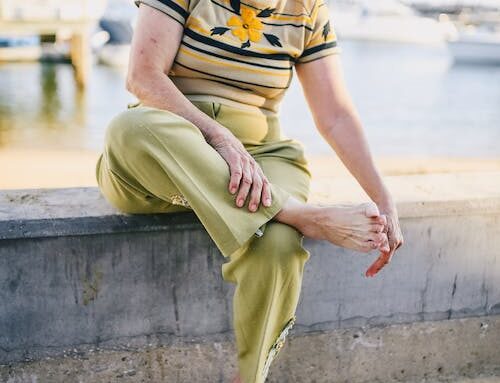Many people love painting their nails — it’s a quick way to look polished and confident. But can you get nail fungus from nail polish? The answer might surprise you. While nail polish itself doesn’t cause fungus, it can sometimes spread fungal infections if brushes, bottles, or tools become contaminated.
If you love painting your nails, you’re not alone — nail polish is a quick way to make your hands or feet look polished and well cared for. But if you’ve ever wondered whether nail polish could cause a fungal nail infection, you’re asking a smart question.
The short answer? Yes — it’s possible to get nail fungus from nail polish, especially if you share it, use contaminated tools, or apply it over an existing infection. While nail polish itself doesn’t create fungus, it can easily become a carrier for it.
At Laser Nail Therapy, we help patients every day who unknowingly developed nail fungus from small, everyday habits — including nail polish. Here’s what you should know to protect your nails and keep them healthy.
How Nail Fungus Develops
Toenail fungus, medically known as onychomycosis, is caused by microscopic fungi that thrive in warm, moist environments — like shoes, nail salons, and even polish bottles. According to the American Academy of Dermatology, nail fungus is one of the most common nail conditions affecting adults.
These fungi can enter through tiny cracks or cuts around your nail and start growing underneath the nail plate. Once they take hold, the infection can cause:
- Thickened or brittle nails
- Yellow, brown, or cloudy discoloration
- Separation of the nail from the nail bed
- Unpleasant odor or pain when wearing shoes
And once it starts, toenail fungus rarely goes away on its own. It needs targeted treatment to be fully clear.
Can Nail Polish Really Cause Nail Fungus?
Nail polish itself doesn’t contain fungus, but it can become contaminated — and it can help fungus grow in the wrong conditions. Here’s how:
- Sharing Nail Polish or Tools — Using someone else’s nail polish, brush, or manicure tools can easily spread fungal spores.
- Reusing Old Nail Polish — If you’ve applied polish on an infected nail, the brush may pick up fungal spores and introduce them back into the bottle.
- Applying Polish Over an Existing Infection — Covering an infected nail with polish traps moisture underneath, creating the perfect environment for fungus to multiply.
- Using Salon Products That Aren’t Properly Sanitized — Shared salon polish bottles or tools that aren’t disinfected between clients can spread fungus.
Signs You Might Have Nail Fungus from Nail Polish
It can be tricky to spot a fungal infection early, especially if you wear polish often. Look out for these warning signs:
- A white or yellow patch under the nail
- Changes in nail texture — thick, brittle, or crumbly
- Nail color darkening even after removing polish
- Discomfort, pressure, or odor
If you notice these changes, it’s best to remove the polish and see a specialist. The sooner you start treatment, the better your results.
Can Nail Polish Make Toenail Fungus Worse?
Yes — it can. Nail polish can seal in moisture and prevent your nail from “breathing.” If fungus is already present, this environment helps it spread faster.
Dark or opaque polish shades block light, creating a warm and humid environment — exactly what fungus thrives on. Even antifungal or “breathable” nail polishes aren’t cures; they can’t eliminate an infection on their own.
How to Prevent Nail Fungus from Nail Polish
- Avoid sharing polish — even with close friends or family.
- Use your own manicure kit at nail salons.
- Throw out old polish that you used while infected.
- Disinfect nail tools regularly with alcohol or antifungal spray.
- Give your nails a break — go polish-free for a week each month.
- Keep nails trimmed and dry, especially after showers or workouts.
Good hygiene goes a long way toward prevention — but once fungus has started, you’ll need treatment to fully remove it.
Why Laser Treatment Is the Most Effective Solution
While many people turn to creams or oral antifungal pills, these treatments can be slow or cause side effects. That’s why so many patients now choose laser toenail fungus treatment.
At Laser Nail Therapy, we use advanced FDA-cleared lasers that target the infection directly beneath the nail — without pain, pills, or downtime.
Benefits of Laser Toenail Fungus Treatment:
- Non-invasive and medication-free
- No side effects or recovery time
- Proven effectiveness — up to 80% success rate
- Short sessions (about 30 minutes)
- Long-term results when paired with good hygiene
When to See a Specialist
If you suspect your nail polish habits may have caused a fungal infection, don’t wait. Fungus won’t go away on its own — and covering it with more polish only delays recovery.
Our specialists at Laser Nail Therapy can quickly evaluate your nails, confirm the infection, and create a customized laser treatment plan to restore your nails’ natural appearance.
The Bottom Line
While nail polish itself doesn’t cause fungus, it can spread or worsen an infection if you’re not careful. The good news? With professional care and modern laser toenail fungus treatment, you can restore your nails safely, effectively, and without medications.
Ready to Get Started?
Healthy, clear nails are possible — without the pills or polish damage. Click below to schedule your consultation with Laser Nail Therapy today.
Prefer to call? (800) 672-0625



